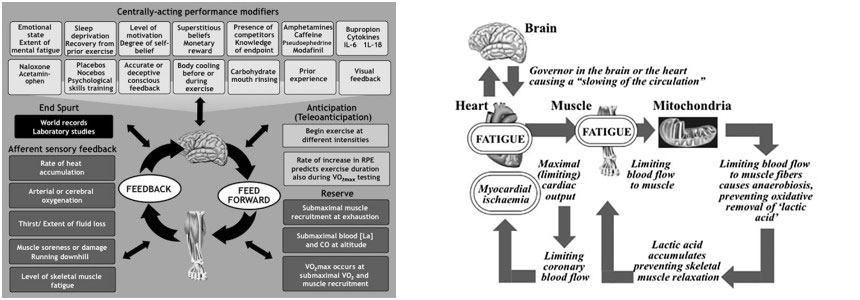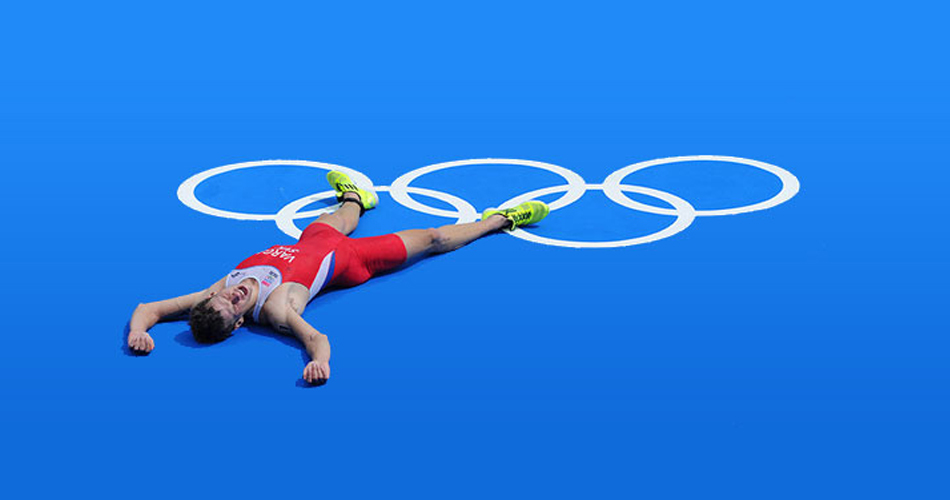The Best Review Article on Fatigue and My Application of It
This is the finest piece of art and science by Tim Noakes, the ‘father’ of Central Governor Model (CGM) of exercise regulation.
Fatigue is a brain-derived emotion that regulates the exercise behavior to ensure the protection of whole body homeostasis

I want to thank Mike Nelson for posting it on his FB wall. I printed this one out and really enjoyed reading it. Although I follow Noakes’ group in the last 5 years or more I guess (and I have been corresponding with the Tim couple of times), this paper really hit the target, at least for me.
At the moment I am contemplating about physiological~psychological or biological~behavioral differences between pre-set training (a.k.a. percent based) and auto-regulatory training.
Hopefully, I will expand on pros and cons of each in the near future and I must admit that Noakes’ article did put some more oil on this fire. The point is that with modifying the way we perceive work along with other factors might influence our behavioral and thus biological/training effect – “Accordingly Tucker (2009) has proposed a model of exercise regulation which “incorporates anticipatory/feedforward as well as feedback components, using an expectation of exercise duration to set an initial work rate and to generate what has been termed a subconscious ‘template’ for the rate of increase in the RPE” (page 6).
In some scenarios (again context dependency) certain percent-based training program will yield better training effects compared to auto-regulatory program, not because of it’s ‘superior’ design, but because it affects irrational~rational behavior of the humans and thus training effects and vice versa. And this irrational~rational behavior is affected by the effort and exhaustion perception (which brings us to Noakes article). The way we give instructions, feedback, influence constraints will affect behavior, effort and thus training effect. There is no ‘ultimate strategy’, thus coach need to modify it according to the context, goals and population he is dealing with. And this goes beyond gym work.
At the moment my athletes are doing percent based training (I mostly utilize tables from Dan Baker and Joe Kenn) because it affects how they behave in the gym, not because program is superior to some other. Having predetermined weights, reps, sets and rest minimize the wiggle room and decision making by athletes. This is of course double-edged sword IMHO – because biological systems are not linear and we cannot plan in advance the performance for a given day. Yes, we do have certain flexibility, but we mostly stick to the number on the sheet. Periodic evaluation (doing AMRAP tests and calculating new max) helps to be more along the line with the current adaptation.
I tried this approach myself last month and I did pretty good, because it affected my wiggling and stupid irrational behavior (check How to Be Your Own Coach by Lyle McDonald). Usually I push myself too much and I tend to over think everything and that is a burden. With percent based approach I go in, do it, get out and unload when needed. No decision making when under fire (at least try to minimize it – using flexibility in black and white – too hard? don’t do more sets). This worked pretty fine until couple of days ago, when I felt like sh*t and I pushed the weights as written on the paper during the squat workout. I felt angry, I checked the percentages and luckily I stopped on the 5th set, or else I would got injured (I did got sore as HELL the next couple of days though). This brings me to Jim Wendler advice of starting with 90% of max and going submaximal, and to idea that flexibility should be taken into account as well even in percent based training.
We need black-and-white flexibility strategies in both percent-based and auto-regulatory training to avoid the showing of the irrational Chimp (I am reading really good book by Dr. Steve Peters – The Chimp Paradox). These black-and-white strategies come for The Switch book which I find very influential on me.
Some folks utilize these black-and-white strategies in dieting as well (think intermittent fasting, either you eat or you don’t). In strength training for example, the black-and-white strategy in percent-based training would be “if it feels to havy, do only one set”, while in auto-regulatory training with drop-off sets time limits serve the purpose or limiting how much damage you do. The problem with auto-regulatory training is that we put the trust in athlete’s decision making (and thus the Chimp’s ugly head can come up more easily) and that might be really good in some cases and/or REALLY bad on another (i.e. 20 soccer players in the gym vs. advanced olympic lifter). One approach I just came across is to implement both variations of percent-based and autoregulatory approach with Autoregulatory Cluster Training. Seems like an interesting idea.
To avoid giving decision making to the Chimp, especially when the shit hits the fan and you get irrational in the gym, tools like Gym Aware comes to my mind – you stop when you hit certain decrement in power/depth whatever instead of relying on your self-perception of technique and any feel or subjective indicator in general. And that’s why it is important to have training partners as well.
How many times you felt like sh*t, you did a warm-up and you hit a PR? And how many times you felt great, and the effort to put that 20kg plate on the bar seamed higher than usual along with moving the warm-up sets. Our perceptions are tricky. It doesn’t mean they are lying all the time, but it means we need to take them with grain of salt.
The key is to have rationally defined strategies (in black and white) BEFORE you become irrational. Think of moving your alarm clock to another room, so when it rings you have to move out of bed instead of hitting snooze button. Please note that this happens even if you decided that you will go on that 5am run last night.
The recent research in behavioral sciences (behavioral economics) show us that we are not rational beings at all and certain context and affections can influence how me make a decisions. I got injured numerous times because I was pursuing some goal (and yes, I believe that this new-age goal setting movements is sometimes out of the freakin’ line) instead enjoying the trip and being mindful at the moment. And now I want to try to identify those certain patterns that might help with behavioral aspects of exercise programming.
And coming back to Noakes, the way we design the workouts might influence the amount of exertion and effort we might sense and thus it might influence behavior and training effects. For example, if I need to eat a bunch of frogs the best possible solution would be to eat the biggest one first – thus, the hardest set could be your first one. I know I need to hit one set hard and then just do couple of them with dropped off weight (please check Martin Berkhan’s Reverse Pyramid). Compare this to couple of sets across – it feels more demanding (perception) than the former, even you might end up doing LESS work.
When doing intervals and training session in general, I’ve also noticed that when the athletes know the end points (what are they doing in the practice, and how long does it going to take) they tend to chose higher pace (power output) compare when they don’t know what are they doing and for how long. Sometimes, you don’t want to athletes to know how long certain effort will last because this happens in competition, but sometimes you want them to know so they can pace and give you higher effort.
We have also been experimenting with decreasing intervals – for example 30/30 @ 100% MAS for 3x6min compared to 7,6,5min. Even if the total volume is the same (18mins), the latter might seem easier to athletes (eat the biggest frog first), where 5,6,7 might seem really heavy. Depending on what are your goals you might choose different option.
Also, a little trick – for example you decide to do 4 sets of intervals, and you tell athletes that they are going to do 5, but you allow athletes to bitch and on their demand you decide to do reduce to 4. Wow, they feel they have a right to decide and they feel more in control of the workload which might make them to actually give you more effort on those 4.
The problem is that you cannot trick yourself when you have yourself as the athlete…. or you can? In the mean time check this study – Effects of deception on exercise performance: implications for determinants of fatigue in humans.











Responses